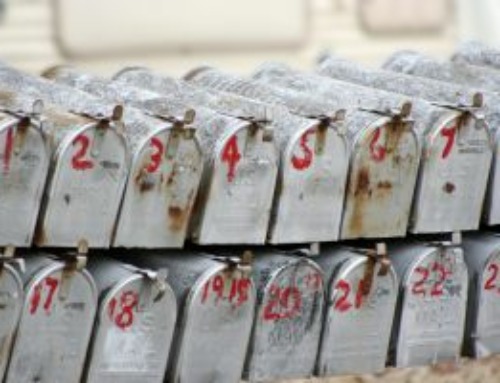 Have you noticed the Halloween décor is ramping up? The stores have been touting their spooky stuff for a few weeks and now I’m seeing the lights and yard decorations popping up around the neighborhood. Before you know it, trick-or-treaters will be showing up at the door and we’ll be going into sugar overload at the office as colleagues bring in the leftovers the kids didn’t get.
Have you noticed the Halloween décor is ramping up? The stores have been touting their spooky stuff for a few weeks and now I’m seeing the lights and yard decorations popping up around the neighborhood. Before you know it, trick-or-treaters will be showing up at the door and we’ll be going into sugar overload at the office as colleagues bring in the leftovers the kids didn’t get.
And then the holidays will be upon us…that fast.
It’s a perfect time for email list hygiene!
That makes the Halloween season (because it’s really a season now, not a day) the perfect time for email list hygiene in preparation for holiday email marketing. Like the ceiling corners in your living room that play host to cobwebs, or the piles of boxes in your garage the daddy long legs call home, your email list can hide ghosts and goblins of subscribers past. And those spirits can haunt your email deliverability, lowering it and giving you a bad reputation in the eyes of the ISPs.
You’re not just cleaning out the bad email addresses—meaning those that are defunct and no longer work—but those for folks who’ve stopped responding too—the unengaged. Why remove them, you ask? Because they don’t open or engage with your emails, and that makes you look like spam in the eyes of the ISP. And when you look like spam, you get treated like spam, and your email deliverability rate goes down.
Tips for doing email list hygiene
To help you clean out the ghoulish addresses that can get in your way, we offer email list hygiene tips below. Before you start on those, however, first do some prep work so you’re building a cleaner list from the start from now on.
Prior to scrubbing your email list, review your opt-in processes. Are you CASL compliant? Do you need to be? Now is the time to avoid future hygiene problems. The following steps will help keep bad addresses from getting onto your list in the first place:
- Verify that all addresses conform to the “user@domain.extension” format as part of the signup process. While this alone doesn’t guarantee an address is valid, if an address doesn’t match this format, it definitely is not valid and shouldn’t be added to your list.
- Consider asking subscribers to enter their email address twice when opting in. The double entry of email addresses helps eliminate subscriber spelling errors that lead to bad data.
- If you have a history of some subscribers submitting invalid addresses, consider using double opt-in to eliminate garbage. A simple welcome email can serve the same purpose: Immediately remove any bouncing addresses.
Review your unsubscribe process
Don’t forget to evaluate your unsubscribe process too. Is the unsubscribe link easy to find in your email template? Is it easy to unsubscribe? If it isn’t, you may be generating spam complaints from subscribers who want off but can’t figure out how to unsubscribe. So they simply flag you as spam instead. This can do serious damage your email deliverability.
9 steps for email list hygiene
Once you’ve cleaned up your email opt-in processes and reviewed your unsubscribe one, it’s time to get rid of those ghosts and goblins at last. Here are the nine steps to take to do just that:
1) Suppress any hard bounces. Sending to invalid addresses is a sure fire way to damage your email deliverability.
2) Eliminate duplicate email addresses. If your ESP does not do this automatically, do it manually. And carefully review your final list when merging multiple audiences.
3) Remove and/or correct bad domains.
- Search for and correct simple data entry mistakes like misspelled domains (at&t.com, alo.com, hotmil.com, etc.).
- Try to determine how those bad addresses got onto your list. Is there a data capture problem? How can you eliminate the possibility of bad domains making it on to your list in the future?
- The presence of dead domains like attbi.com and alltel.net show that you haven’t been performing consistent email list hygiene. Remove them and commit to regular list scrubbing in the future.
4) Remove obvious fake accounts, addresses that were entered as a prank, or are plain garbage. Look for addresses like test@, asdf@, qwerty@, and common expletives as user names.
5) Remove “spam” email addresses. Email addresses with the word “spam” in them are likely to be spam traps. Remove “junk” email addresses for the same reason.
6) Remove “role” addresses. These are addresses like info@ and webmaster@. It is a good bet that these addresses are spam traps. No one signing up for personal emails should be using these addresses. Unsubscribe them.
7) Consider removing inactive addresses and moving them to a separate list for a re-engagement campaign. Frequently monitor your list to determine who is no longer engaged (no opens, no clicks) and remove them from your primary mailing list. Be sure to think through what “inactive” means to you and your business before treating a subscriber as inactive.
8) When in doubt, leave it out. Why risk hitting a spam trap or getting a complaint from questionable addresses? Send a double opt-in request to questionable addresses. Delete all that do not opt in.
9) Consider using a list cleaning service. There are many to choose from. ClickMail can help you find one that is reputable and provides results. These services can find spam traps they know, known complainers, invalid addresses, temporary addresses and more—all addresses you don’t want on your list. You can find an up-to-date list of the top bulk email verification and validation services compared here.
This seems like a long list, I realize, but wouldn’t you rather have a clean list made up of people who want to hear from you and the improved email deliverability that results from such a list? That’s what email list hygiene will give you…and then you can reward yourself with a little of that Halloween candy.



